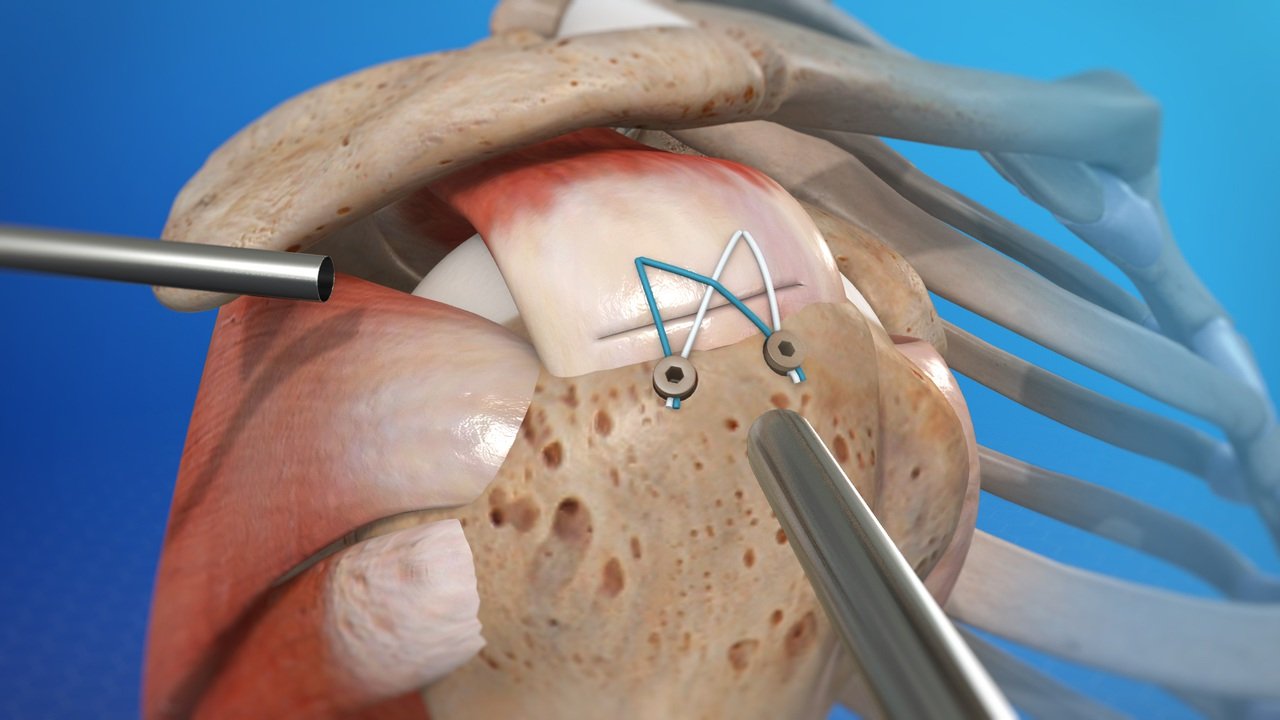
Rotator cuff repair
Rotator cuff repair is a surgical procedure performed to repair a torn or damaged rotator cuff in the shoulder. The rotator cuff is a group of muscles and tendons that surround the shoulder joint, helping to stabilize and move the arm. When the rotator cuff is injured, either through repetitive use, trauma, or degeneration, it can lead to pain, weakness, and limited range of motion in the shoulder.
During a rotator cuff repair, the surgeon will typically make small incisions around the shoulder and use specialized instruments to access the torn tendon. The torn or damaged tissue is then trimmed, and the remaining healthy tendon is reattached to the bone using sutures or anchors. In some cases, additional procedures may be performed to address other issues in the shoulder joint, such as removing bone spurs or repairing other damaged tissues.
Rotator cuff repair may be recommended for individuals who have
- Persistent shoulder pain that does not improve with conservative treatments such as rest, physical therapy, and medication.
- Significant weakness or loss of function in the shoulder.
- Tendon tears that are large or causing significant symptoms.
- Tears in younger individuals who are active and desire a return to sports or other physical activities.
Arthroscopic Rotator Cuff Repair:
- Small incisions are made around the shoulder joint.
- A tiny camera (arthroscope) is inserted through one of the incisions to visualize the inside of the shoulder joint.
- Specialized instruments are used to clean the damaged tissue and prepare the tendon for repair.
- The torn tendon is then reattached to the bone using sutures or anchors.
- The incisions are closed, and a sterile dressing is applied.
Open Rotator Cuff Repair:
- A larger incision is made over the shoulder joint to directly access the torn tendon.
- The surgeon carefully exposes the damaged tendon and surrounding structures.
- The tendon is repaired using sutures or anchors, and any additional procedures, such as tendon transfers or grafts, may be performed if necessary.
- The incision is closed with sutures or staples, and a dressing is applied.




